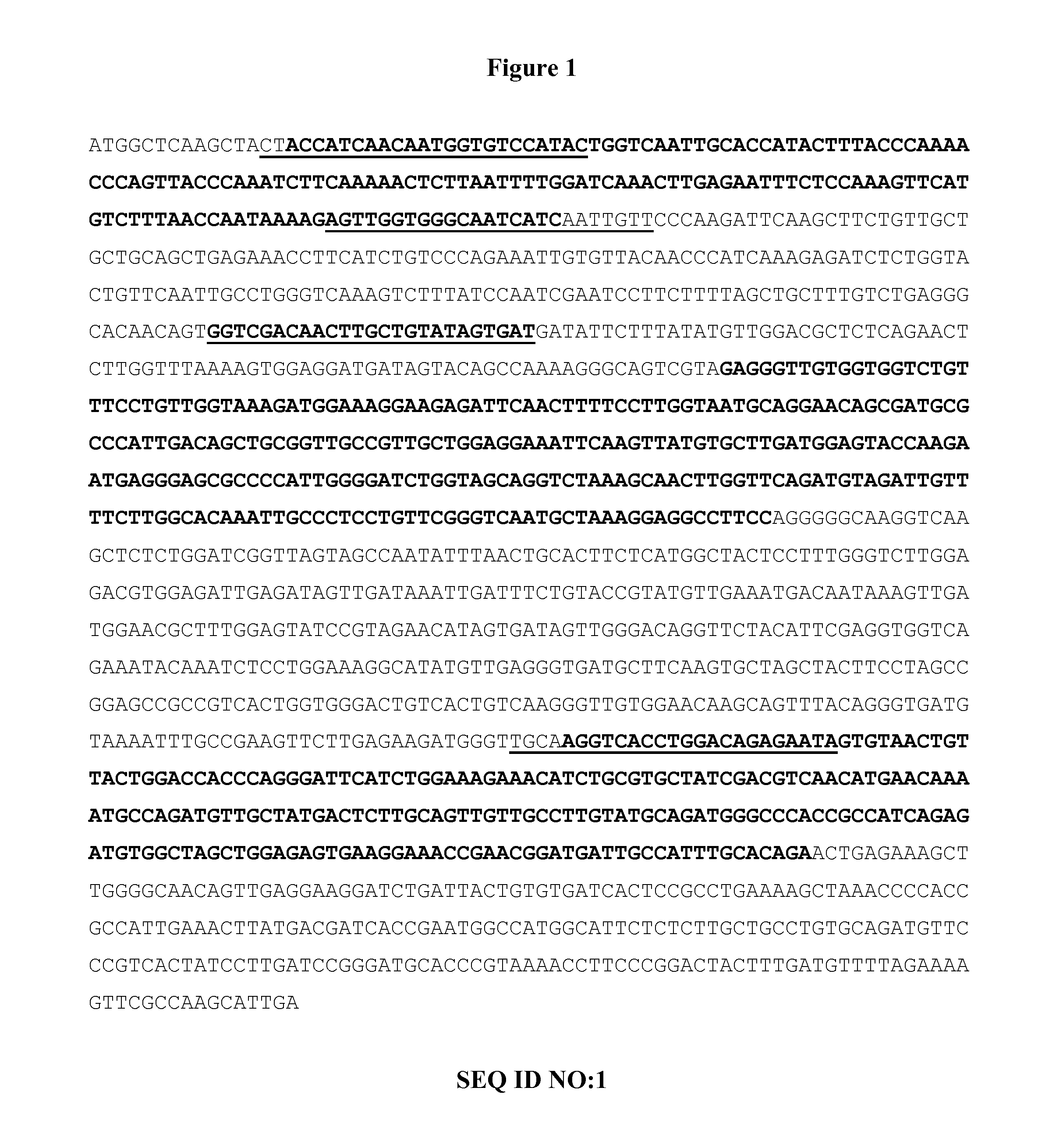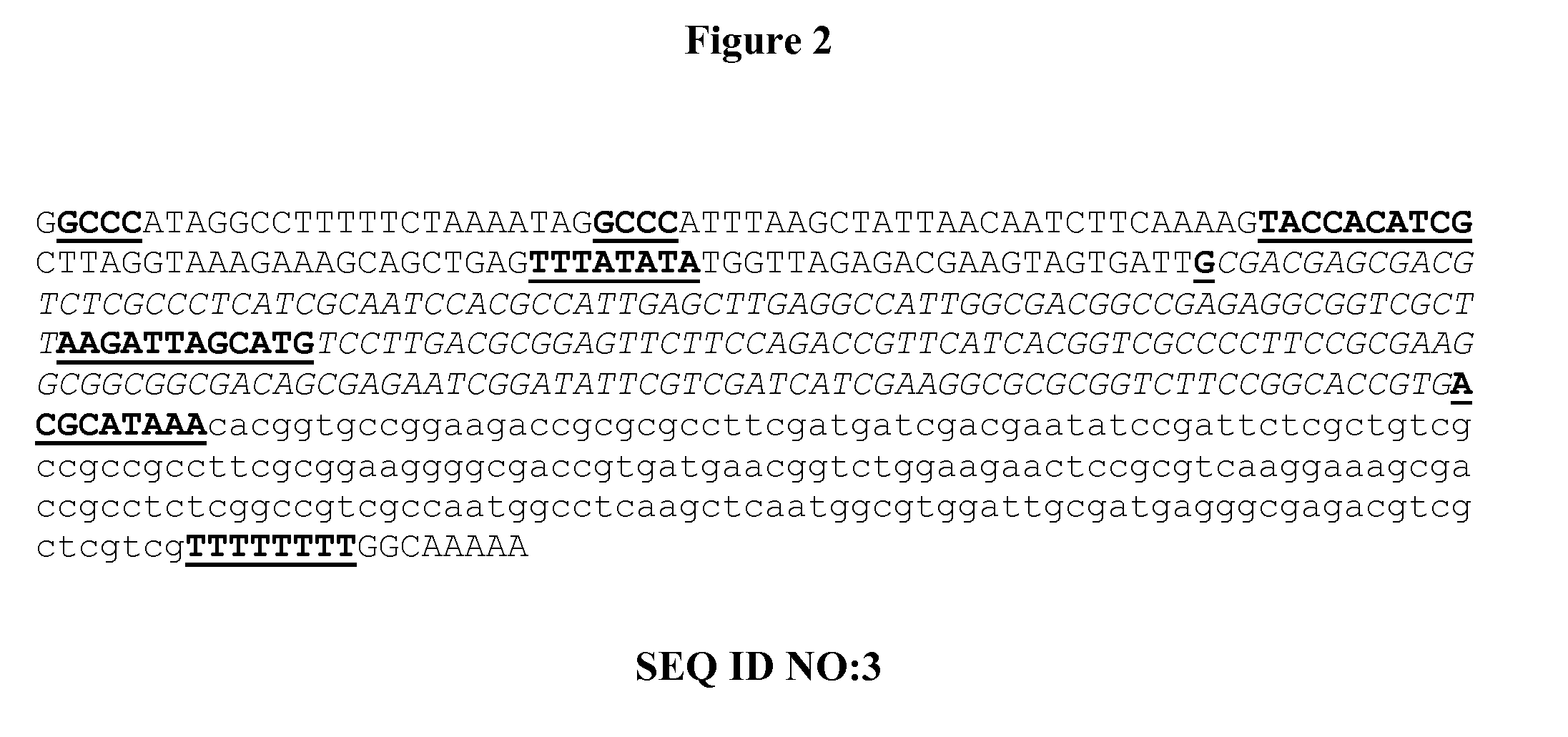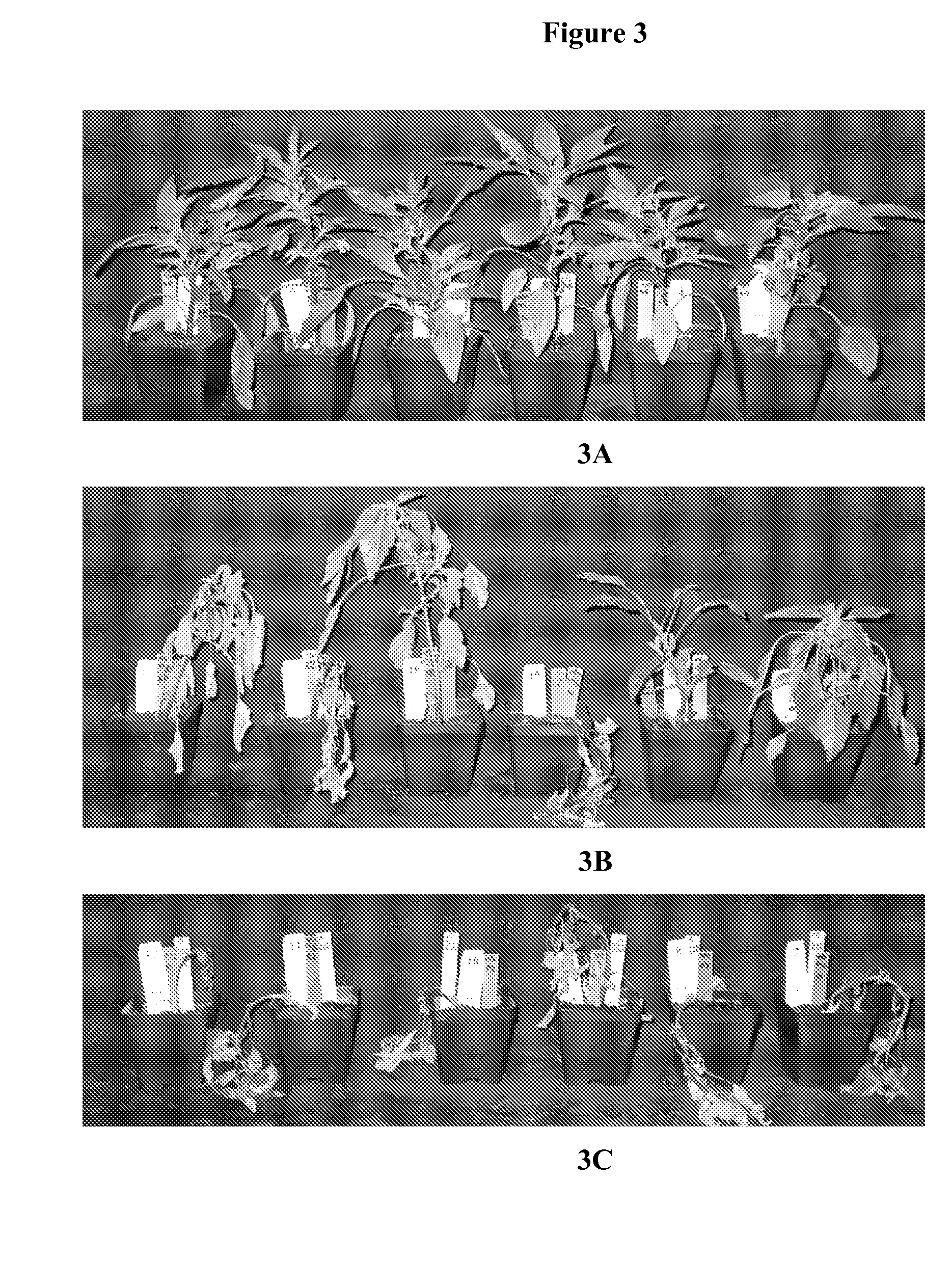Polynucleotide molecules for gene regulation in plants
a technology of polynucleotide molecules and genes, applied in the field of polynucleotide molecules for regulating genes in plants, can solve problems such as failure of herbicides to control resistant weeds
- Summary
- Abstract
- Description
- Claims
- Application Information
AI Technical Summary
Benefits of technology
Problems solved by technology
Method used
Image
Examples
example 1
[0082]This example illustrates the utility of the polynucleotide molecules of this invention in controlling herbicide resistant weeds. Genotypes of glyphosate-resistant Palmer amaranth were identified as having multiple copies, e.g., from 4 to more than 100 copies, of the gene encoding 5-enolpyruvylshikimate-3-phosphate synthase (EPSPS) which is targetted by the glyphosate compounds in herbicide treatments.
[0083]With reference to SEQ ID NO:1 as shown in FIG. 1, four oligonucleotide-size “short” dsRNA molecules were designed with an anti-sense strand that is capable of hybridizing to the mRNA transcribed from the Palmer amaranth EPSPS gene at positions 14-38 (short dsRNA-1), positions 153-177 (short dsRNA-2), 345-369 (short dsRNA-3), and 1105-1129 (short dsRNA-4), as indicated by underlined nucleotides in FIG. 1. The four designed short dsRNAs were purchased from Integrated DNA Technologies (IDT); the dsRNAs had a two nucleotide overhang at the 3′ end of the anti-sense strand, and ha...
example 2
[0095]This example illustrates the utility of the polynucleotide molecules of this invention for improving the control of glyphosate herbicide-sensitive weeds. The mixed (short / long) dsRNA solutions prepared in Example 1 were applied to glyphosate-sensitive velvetleaf plants (a total of 40 microliters applied to two leaves) that had been pre-treated with the surfactant solution used in Example 1. Control plants were treated with buffer only following pre-treatment with the surfactant solution. 48 hours after dsRNA treatment the plants were treated with glyphosate herbicide solution (53 g acid equivalent per hectare of Roundup® WeatherMAX® brand glyphosate herbicide). A two-fold increase in glyphosate activity as estimated by observing plant growth (measured as plant height) was observed in the plants treated with the polynucleotide composition and herbicide as compared to control plants treated with buffer and herbicide. The plants treated with the polynucleotide composition and her...
example 3
[0096]This example illustrates the utility of the polynucleotide molecules of this invention for controlling weeds in transgenic glyphosate-resistant crops. Transgenic alfalfa, canola, corn, cotton, rice, soybean, sugarcane, sugar beet, and wheat plants having recombinant DNA for expressing a bacterial EPSPS (see U.S. Pat. RE39,247 for a description of glyphosate-resistant “class II” EPSPS genes) are treated with (a) the surfactant solution used in Example 1, (b) the mixed (short / long) dsRNA solution prepared in Example 1, and (c) glyphosate herbicide solution (1682 g acid equivalence per hectare Roundup® WeatherMAX®) 48 hours after dsRNA treatment. After 30 days all transgenic glyphosate-resistant crop plants survive and exhibit no stunting.
PUM
| Property | Measurement | Unit |
|---|---|---|
| Time | aaaaa | aaaaa |
| Volume | aaaaa | aaaaa |
| Mass | aaaaa | aaaaa |
Abstract
Description
Claims
Application Information
 Login to View More
Login to View More - R&D
- Intellectual Property
- Life Sciences
- Materials
- Tech Scout
- Unparalleled Data Quality
- Higher Quality Content
- 60% Fewer Hallucinations
Browse by: Latest US Patents, China's latest patents, Technical Efficacy Thesaurus, Application Domain, Technology Topic, Popular Technical Reports.
© 2025 PatSnap. All rights reserved.Legal|Privacy policy|Modern Slavery Act Transparency Statement|Sitemap|About US| Contact US: help@patsnap.com



